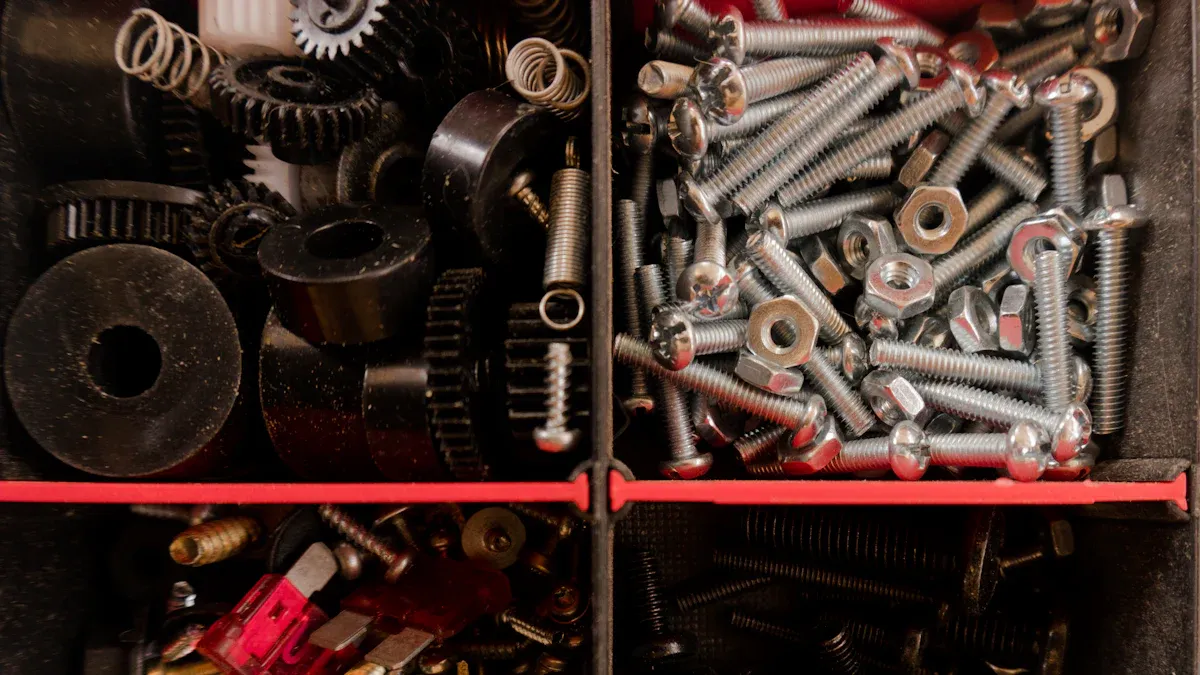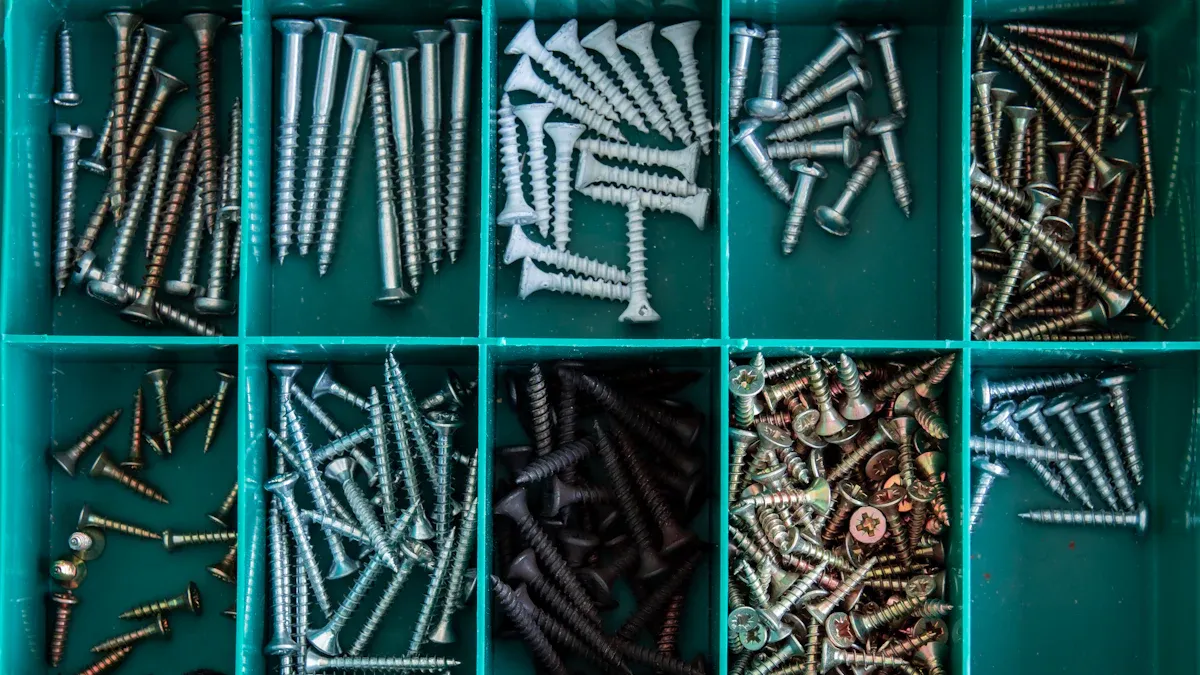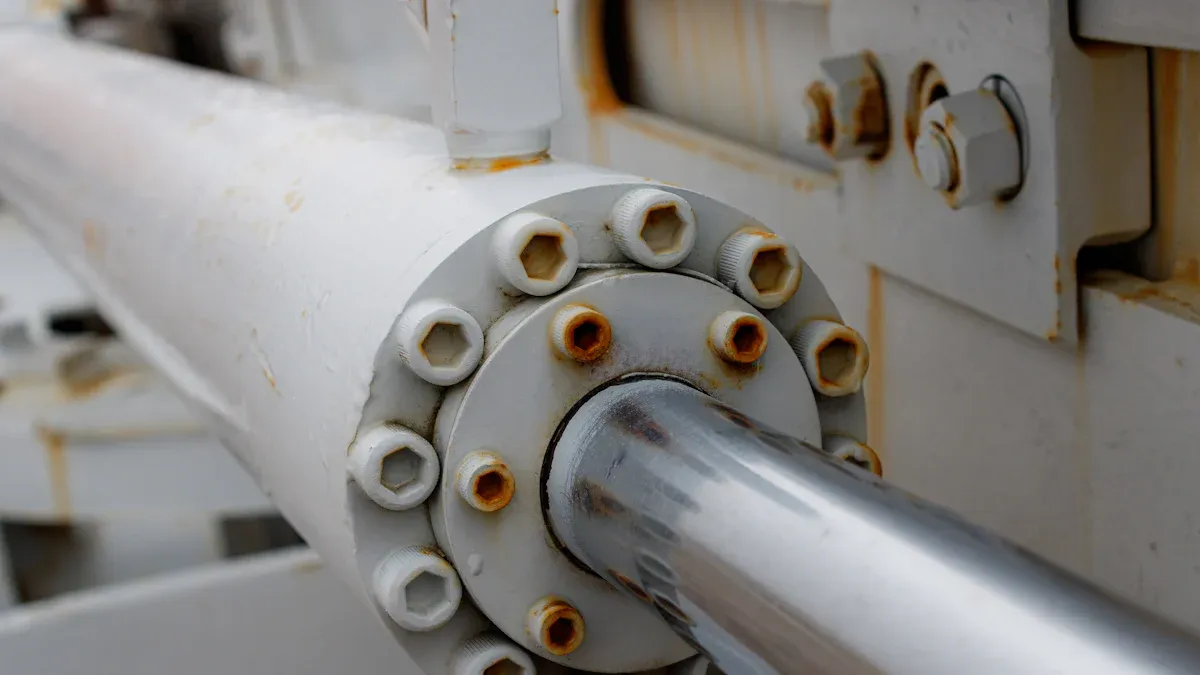
Mine-Grade Section Bolts support mine tunnels and equipment by providing strength and stability. These bolts meet ISO 9001 standards, which ensure quality and safety.
- Manufacturers test each batch for strength and durability.
- ISO 9001 certification shows strict quality control.
Mine-grade cutting edge bolts and motor grader blade bolts deliver reliable performance in harsh mining environments.
Key Takeaways
- Mine-grade section bolts provide strong support and safety in mining by preventing collapses and stabilizing tunnels.
- ISO standards ensure these bolts meet strict quality and strength requirements, verified through testing and certifications.
- Always check for valid ISO 9001 and ASTM certifications and review supplier documentation to guarantee reliable and safe bolts.
Mine-Grade Section Bolts and ISO Standards

Definition and Critical Role of Mine-Grade Section Bolts
Mine-Grade Section Bolts play a vital role in underground mining. These bolts secure loose rock and prevent ground falls, which directly improves miner safety. By stabilizing underground openings, they help reduce unplanned downtime caused by collapses. This stability increases operational efficiency. Protective coatings, such as epoxy and duplex coatings, extend the life of these bolts in harsh underground environments. The bolts adapt to different geological conditions and mining methods. They act as the primary roof support, stabilizing the mine roof and preventing dangerous collapses. The effectiveness of these bolts is measured by the PRSUP parameter, which considers bolt length, number, capacity, spacing, and entry width. Higher PRSUP values show stronger support and better protection for miners.
Key ISO Standards for Mine-Grade Section Bolts
International standards ensure that Mine-Grade Section Bolts meet strict requirements for quality and safety. The most important standards include ISO 898-1, ISO 898-2, and ISO 3506-1. These standards define the mechanical properties, material specifications, and testing protocols for bolts used in demanding environments. The table below summarizes the main requirements:
| Aspect | Details |
|---|---|
| Bolt Grade | 4.6 |
| Material | Low and Medium Carbon Steel |
| Applicable Standards | ISO 898-1 and ISO 898-2 (mechanical properties and testing), ISO 3506-1 (fasteners) |
| Mechanical Properties | Yield Strength: 240 MPa, Tensile Strength: 400 MPa |
| Manufacturing Methods | Hot forging, CNC machining, Cold forging |
| Testing Methods | Tensile testing, Impact testing, Dye penetrant inspection |
| Applications | Petrochemical, Power plants, Oil & Gas industries (relevant to mining-grade bolts) |
| Sizes Available | Up to M100 |
| Coatings | PTFE, Black Oxide |
These standards help ensure that every bolt delivers the required strength and durability for safe mining operations.
Mechanical Properties and Certification Requirements
Manufacturers must follow strict certification processes to ensure that Mine-Grade Section Bolts are ISO-compliant. The main steps include:
- Obtaining ISO 9001 certification to show strong quality management systems.
- Meeting ASTM certifications to confirm that bolts reach quality and safety standards.
- Providing full documentation for certifications like ISO 9001 and ASTM, which ensures traceability and reliability.
- Following strict quality control and testing protocols, including hardness, tensile, and fracture toughness testing.
- Keeping detailed records of materials, manufacturing steps, inspections, and test results for traceability and continuous improvement.
- Undergoing regular audits and inspections to confirm ongoing compliance.
- Verifying supplier credentials, reputation, and supply chain reliability to guarantee consistent delivery of compliant bolts.
These steps help ensure that every batch of bolts meets international standards and provides reliable performance in mining environments.
Ensuring Compliance and Quality in Mine-Grade Section Bolts

Verifying ISO Compliance and Required Certifications
Mining companies must confirm that Mine-Grade Section Bolts meet strict international standards. ISO 9001 certification demonstrates a strong quality management system. ASTM certifications show that bolts pass tests for hardness, tensile strength, and fracture toughness. These certifications are mandatory for acceptance in global mining projects. Buyers should always check for valid ISO 9001 and ASTM certificates before choosing a supplier.
Tip: Reliable suppliers provide full documentation and traceability for every batch.
Testing Protocols and Mechanical Property Verification
Manufacturers use advanced testing protocols to verify the mechanical properties of Mine-Grade Section Bolts. These tests include tensile strength, impact resistance, and hardness checks. Each batch undergoes inspection to ensure it meets or exceeds ISO and ASTM requirements. Modern facilities, such as those operated by Ningbo Digtech (YH) Machinery Co., Ltd., use automated systems and digital quality control to maintain high standards. Test reports are available for review, giving buyers confidence in product reliability.
Comparison of Bolt Grades and ISO Equivalents
Selecting the right bolt grade is essential for mining safety. The table below compares common bolt grades and their ISO equivalents:
| Bolt Grade | ISO Standard | Yield Strength (MPa) | Tensile Strength (MPa) |
|---|---|---|---|
| 4.6 | ISO 898-1 | 240 | 400 |
| 8.8 | ISO 898-1 | 640 | 800 |
| 10.9 | ISO 898-1 | 940 | 1040 |
Higher grades offer increased strength for demanding applications. Mining engineers select the grade based on site conditions and safety requirements.
Leading Global Manufacturers and Supplier Evaluation
Top manufacturers of Mine-Grade Section Bolts include National Bolt & Nut Corporation, Chicago Nut & Bolt, Nippon Steel Corporation, and Ningbo Digtech (YH) Machinery Co., Ltd. These companies stand out for ISO 9001 certification, advanced machinery, and strict quality checks. Many offer custom bolt designs, fast delivery, and technical support.
When evaluating suppliers, buyers should review certifications, test reports, and supply chain reliability. Choosing a reputable manufacturer ensures consistent quality and safety in mining operations.
Selecting ISO-compliant Mine-Grade Section Bolts improves mining safety and equipment reliability. Industry professionals recommend verifying certifications, reviewing supplier documentation, and checking test reports. These bolts offer high tensile strength, precise fit, and durability, which reduce maintenance costs and downtime. International ISO standards ensure long-term performance in harsh mining environments.
FAQ
What makes a mine-grade section bolt ISO-compliant?
An ISO-compliant bolt meets strict standards for strength, material, and testing. Manufacturers provide certification and documentation to prove compliance.
How do mining companies verify bolt quality?
They check certifications, review test reports, and inspect supplier documentation. Reliable suppliers offer full traceability for every batch.
Why do mining operations prefer ISO-certified bolts?
ISO-certified bolts deliver consistent strength and durability. These bolts help protect workers and equipment in harsh mining environments.
Post time: Jul-16-2025